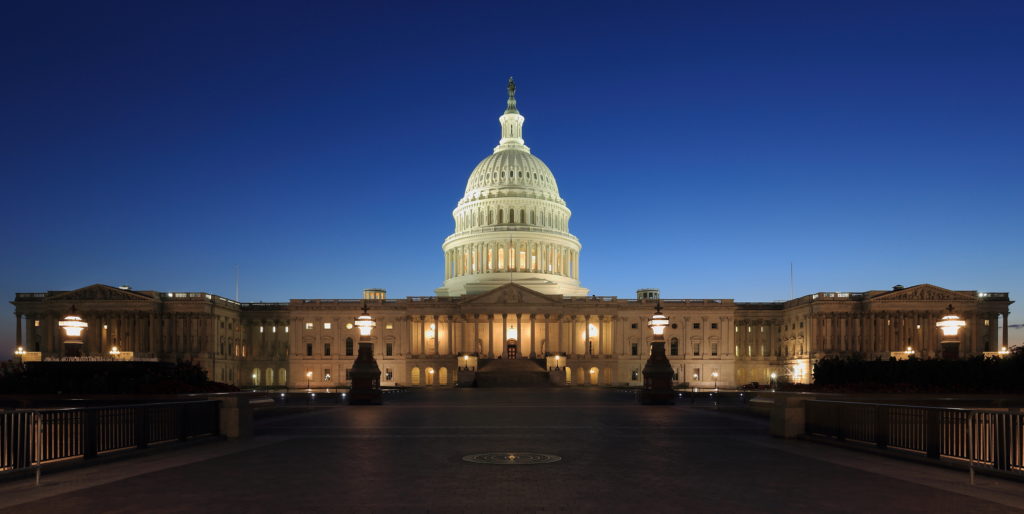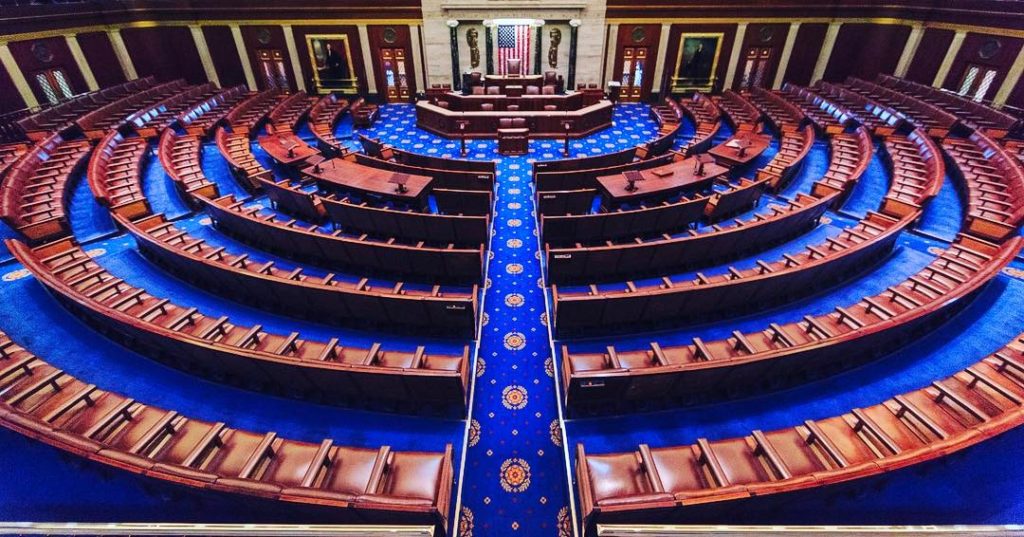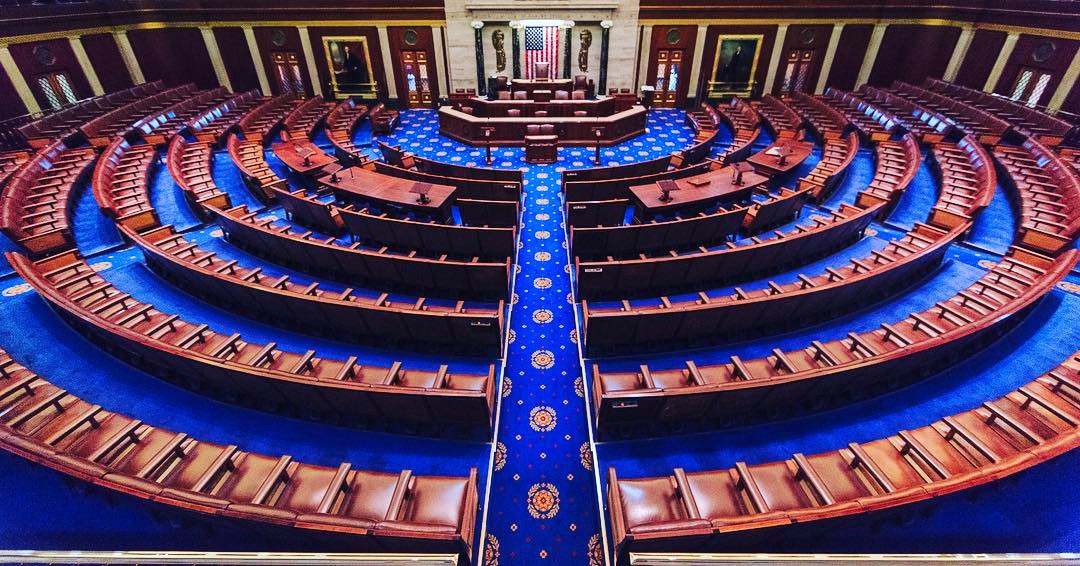The United States House of Representatives is a cornerstone of the American Democratic system, a piece of living history, and a real shitshow. Actually, that’s a little harsh. The House is much better designed than the Senate, the legislative Branch’s resident lead paint fiend. Still, the House is a never-great-but-once better American institution whose worth as a pillar of American democracy is waning each year.
Let’s go!
Originally established as the lower house of the American bicameral legislative system, the House of Representatives was the bad boy people-representing house where the Senate was built to represent the states individually. Where each state received a set-in-stone count of two senators, the House was a little more flexible, allocating seats based on population. The more people your state has, the more Representatives. Mostly. The allocation of House seats comes with a catch: no state can have fewer than one representative. The rule exists to stop any state from going unrepresented (wise) but also means that if we, as a society, come together and convince everyone to move out of Wyoming, the state still gets a representative. A very problematic and realistic example of the dark side of the US House.
Although the minimum-of-one rule does bring forth some concern regarding the allocation of House seats, the more pressing concern comes on the other end of the spectrum: the maximum number of seats. The basics, again, are pretty simple: the more people you have, the more seats you get. The problem is that this statement is only true relative to the population of the United States as a whole. “More people = more seats” only exists as a universal truth if the House doesn’t have a limit on the number of seats overall. For most(ish) of American history, the number of seats in the House went up with the national population. Starting with 59 seats in 1789, the size of the house would go on to grow significantly until it reached 435 voting members in 1913. Then, it stopped.
The United States didn’t stop growing in 1913 (or 1911, when the law was made). In fact, it did the opposite of stopping: it kept going. The national population in 1913 was about 97.2 million. Today, it’s 327.2 million. For those of you keeping score at home: yep, that’s bigger. Over 200 million people bigger, to be (less than) exact. More numbers incoming. The first United States census, back in 1790, pegged the national population a few patriots shy of 4 million people. With 105 representatives up for grabs thereafter, that’s about one representative for every 38,000 people. In 1913, the ratio was about one representative for every 223,500 people. Again, if you look at that second number, you’ll notice it’s a lot bigger than the first one.

So what’s the big deal? The word of the day here is “representation”. The express purpose of the House of Representatives is to represent the people of the United States. The smaller a group, the easier it is to represent them. Say you’re the US Representative for the newly-vacated state of Wyoming, where you’ve moved with four of your friends. Being that Wyoming now only has five residents, it should be relatively easy to find out what issues they care about and how to represent them (ignoring the possibility of extreme political polarization strong enough to tear five people apart). If 100 people were to move back to the state, it would become a little harder to hear all their voices, but certainly possible given enough time. And how different can 100 people living in the same place be? (Very, I guess). Now, let’s say the entire state of Wyoming, having trouble adapting to life in India, moves back into their own homes. Now you’ve got 200 people to represent. Again, hard, but not impossible. But imagine ten thousand. Fifty thousand. A hundred thousand. A million. A billion. Now stop imagining a billion. It’s way too large a number and it’s not going to be helpful here.
Today, each US representative represents (split evenly) about 750,000 people. Imagine adequately representing and hearing the voices of 750,000 people. If you listened to the opinions of fifty constituents a day, every day, it would take forty-one years to hear them all. Let’s rephrase that to put it in perspective: if you listened to the opinions of five hundred constituents a day, every day, you’d be voted out of office at the end of your term for never doing anything. And you still wouldn’t hear everyone. Now, obviously we’re running into a little bit of a logical problem if our expectations is hearing everyone. With 30,000 constituents, you’re probably not going to hear anyone either, and the further we bring that number down, the more unwieldy it is on a national level. More Representatives cost more tax dollars, and you can only fit so many of them inside the Capitol Building. Still, at some point, we have to imagine it becomes nearly impossible for representatives to properly represent. Even if you could hear everyone, though, would it matter? Statistically, 750,000 people disagree on at least one issue, and finding the best person to adequately represent 750,000 people is going to be as accurate as it is fun.
Speaking of 750,000, let’s take a closer look at that number. Again, that’s me carelessly slicing up a mostly-accurate estimation of the population of the United States into 435 evenly-proportioned bites. But the 435 seats aren’t evenly-apportioned. Remember, each of the 50 states is guaranteed a representative. Any state with fewer than 750,000 people gets just as much representation as one with exactly 750,000 people. Now, there are only three states with populations sub-750k (Wyoming, Vermont, and Alaska), but here’s where the problem gets deeper: for every one of those, a seat that could have been used to represent 750,000 people is now allocated to fewer, meaning the number of people each of the remaining seats needs to represent increases. Three seats is an arguably insignificant number versus 435, but our current method of apportionment also leads to awkward situations where the state of Wyoming has one representative for every 577,000 people and its neighbor to the north, Montana, has one rep for every 1 million. This being because although Montana meets that initial 750,000 (realistically closer to 710,000 by the authority of the 2010 census), it doesn’t hit it a second time, so those additional 250,000+ people are treated as representative overflow. This gap between 1-2 representatives is worst in Montana, but exists in any state with enough people for one representative but not quite enough for a second. Such a gap is, naturally, going to exist no matter where we draw the line between representatives 1 & 2, but that we’ve drawn it so damn high makes it particularly meaningful, especially in states with lower populations.
I know you’re already on my side, here (why wouldn’t you be?) but the most pressing issue of the House’s 435-seat lock isn’t the limit, but the loss of representation. The Constitution sets the standard that representation should be based on population. States with more people get more Representatives. For a while, as discussed, that meant adding more Representatives across the board. Today, though, when a state grows at a tremendous enough rate to earn another Representative, that seat has to come from somewhere, meaning one state loses a Representative. Now, at first this may not seem so ruthless; again, larger states deserve more Representatives, surely. But while states like Texas and California may be outpacing growth across the country, the fact easy to lose in all this is that almost all states are growing. My (new/always, depending on which me you ask) home state of Minnesota is poised to lose one of its 8 Representatives in redistricting following the 2020 census. Texas is growing faster than the North Star State, but Minnesota isn’t exactly shrinking. In fact, it’s slightly edging out the national growth rate of 0.7% by a tenth of a percentage point (0.1%) according to USA Today and the Pioneer Press. Still, because Minnesota isn’t growing as fast as Texas, we’re going to lose some of the representation we already have on the national level. To reiterate, a state that has 5.3 million people and 8 Representatives in 2010 could see itself with 5.7 million people and 7 Representatives in the years following the 2020 census.

Altogether, this should illustrate the broader point that limited representation is a bad thing for a growing country like the United States. If for no other reason, we should agree that 435 is a super weird number. There’s no basis to it. It’s not “the number of states times ten” or “George Washington’s birthday” or “the number of calories in a KFC doubledown”. All(ish) of these, by the way, would be a better method of defining the number of seats in the House.
If you’re unsatisfied by the iron-clad logic of fast food-based apportionment, though, there are some lesser options available. The Wyoming Rule, for example, would create a system in which the population of the least-populous state (can you guess which?) is the bar for reception of a new Representative. In this case1 Representative = 1 Wyoming. This brings down the relative population cost of representation by a considerable amount, but it still doesn’t quite solve the Montana Problem and still leaves the door open to future questions of representation, such as a potential issue a hundred years down the line where even the least-populous state (still Wyoming) could have a population in the multi-millions and still only harbor one Representative. Alternatively, the population of the United States could balance out over the fifty states and create a situation where each state is equally unrepresented.
Another proposal, the “Cube Root Rule” would require the number of seats in the House of Representatives to be equal to the (rounded up) cube root of the national population. Such a rule would guarantee expansion (or contraction) of the house with changes in the national population and guarantee relatively proportional representation. By being the cube root of the national population, though, the number of seats in this scenario would still grow, but grow slower as the population continues to rise, and population could, again, theoretically, again, outpace relative representation.
And those aren’t the only options. The Constitution mandates that a seat should represent no fewer than 30,000 people, which still leaves a considerable amount of room for a policy requiring a new seat be allocated for every 250,000, 100,000, or 30,000 people. So which one do we pick? Anything. Something. For a system that already offers only token representation to residents of America’s non-territories and the District of Columbia, one whose method of election (my boy and yours, first-past-the-post), is already super duper flawed (and bad), the House doesn’t need another method to fail to represent the people of the United States. So let’s repeal the Apportionment Act of 1911 and add some chairs to the Capitol building. Maybe some couches or a chaise lounge to spice it up a little. Just some ideas. Find some stools if you have to, but, Jesus, give us something better than this.
